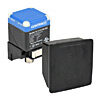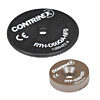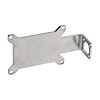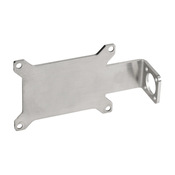 Cookies are not enabled on your browser.
Cookies are not enabled on your browser.Cookies are required for our site. Please enable cookies in your browser preferences to continue.
- Barcode / RFID / Vision
- Bulk Wire & Cable
- Cables (Terminated)
- Circuit Protection / Fuses / Disconnects
- Communications
- Drives & Soft Starters
- Enclosure Thermal Management & Lights
- Enclosures & Racks
- Field I/O
- HMI (Human Machine Interface)
- Hydraulic Components
- Motion Control
- Motor Controls
- Motors
- Pneumatic Components
- Power Products (Electrical)
- Power Transmission (Mechanical)
- Process Control & Measurement
- Programmable Controllers
- Pushbuttons / Switches / Indicators
- Relays / Timers
- Safety
- Sensors / Encoders
- Stacklights
- Structural Frames / Rails
- Tools & Test Equipment
- Valves
- Water (Potable) Components
- Wiring Solutions
- Retired Products
- Programmable Logic Controllers
- Productivity1000 PLCs
- Productivity2000 PLCs
- Productivity3000 PLCs
- ProductivityCODESYS
- LS Electric XGB Series PLCs
- ProductivityOpen
- CLICK PLCs
-
Do-more H2 PLCs or
Do-more T1H Series - Do-more BRX PLCs
- C-more Touch Panels
- AC & DC Drives
- Motion Control Components
- Servos
- StrideLinx
- Pneumatics
Configuration Utilities
- PLC Family Selector
- P1000 PLC Systems
- P2000 PLC Systems
- P3000 PLC Systems
- ProductivityCODESYS
- CLICK PLC Systems
- Do-more® BRX PLC Systems
- LS-Electric® XGB PLC Systems
- Productivity®Open Systems
- Datalogic® Safety Light Curtains
- LS-Electric® Servo Systems
- Nitra® Pneumatic Grippers
- Object Detection (Sensors)
- PAL Controller Configurator
- Precision Gearbox Selector
- Protos X® Field I/O
- Quadritalia® Modular Enclosures
- Stellar® Soft Starters
- Stepper System Selector
- SureFrame T-slot Extrusion
- SureMotion® XYZ Gantry
- SureServo2® System Selector
- SureStep® Linear Actuators
- Timing Belts & Pulleys
- Werma® Stacklights
- ZIPLinks
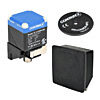
RFID devices use radio frequencies to read and transmit data. RFID read/write modules exchange data with RFID tags which store data in local memory. They may also communicate with an intelligent device, such as a PLC or computer, over a network.

This page will refresh momentarily.
Warning
Some of the selected facets have been selected by the {{ assistanceData.title }} Help.
Resetting/clearing ALL facets will end {{ assistanceData.title }} Help.
![Help icon]() Selection Assistance - {{ assistanceData.title }}
Selection Assistance - {{ assistanceData.title }}
Stride Interactive Product Tour Request
RFID Devices
Category Selection
RFID (Radio Frequency IDentification) devices use radio frequencies to identify and track objects by means of electronic labels. These labels, called tags, are attached to target objects and are a type of transponder that stores identification data. Compared to reading barcodes or using camera systems, RFID technology doesn't require a line of sight between the tag and the Read/Write module, and tags can store a large amount of data that can be edited as opposed to a fixed barcode. This technology can be used in place of traditional identification methods but excels in automated applications for track and trace tasks.
- RFID Read-Write Modules
- RFID Tags
For part listings and specifications, go to Shop Now
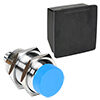
RFID Read-Write Modules
RFID Read-Write modules are a type of transceiver that can communicate identification data with electronic tags using high-frequency RFID technology. RFID Read-Write modules offer fast data transfer times and can communicate to higher-level devices such as a PLC using IO-Link or EtherNet/IP protocols.
- M18, M30, and 44mm x 44mm cube style with IO-Link V1.1 capability
- 112mm x 112mm standalone RFID unit with R/W device, antenna, and EtherNet/IP interface built in
- Read/write distance of up to 220mm, depending on type of tags used
- HF RFID technology operates on 13.56 mHz and complies with ISO/IEC 15693
- Protection ratings of IP67, IP68, and/or IP69K, depending on model
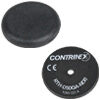
RFID Tags
RFID tags are transponder units that are attached to a product or container and contain electronic memory for storing identification data. Both a fixed memory for storing a unique preset number (i.e. an identifier), as well as user memory for storing application data, are available. Writeable data may include, for example, the object's history or the parameters of operations to which it will be subjected. RFID tags are unaffected by dirt or other visible marring and do not require line of sight to the read/write modules to operate.
- Sizes include 9mm, 16mm, 20mm, 30mm, and 50mm
- User memory sizes from 316 to 2000 bytes
- High-temperature model with 160 bytes of user memory
- Protection ratings of IP67, IP68, and IP69k
- EEPROM tag features
- Unlimited read cycles
- 100,000 write cycles
- 4 bytes per block
- FRAM tag features
- Unlimited read cycles
- 1012 write cycles
- Up to 2,000 bytes of memory per device
- 8 bytes per block
Check out our job openings
Free Online PLC Training
FREE Video Tutorials
FREE e-Newsletter
Automation Notebook
Product Literature
White Papers
News, Product and Training Bulletins
E-Books
 Safe &
Secure
Safe &
Secure

We accept VISA, MasterCard, Discover, American Express, PayPal or company purchase orders.
Voted #1 mid-sized employer in Atlanta
Check out our
job openings

